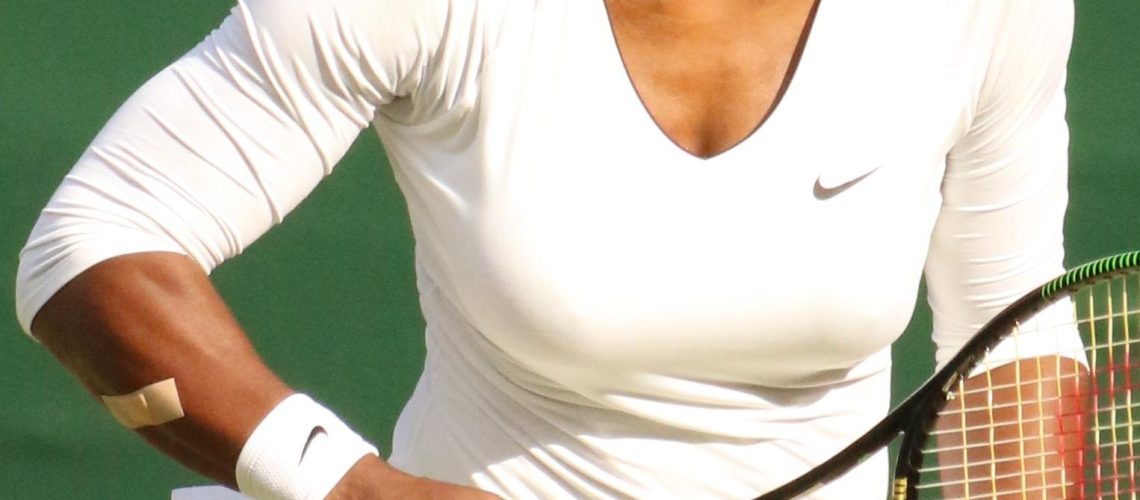We may earn money or products from the companies mentioned in this post.
Introduction to Wheelchair Tennis

Wheelchair tennis is a dynamic and thrilling sport that provides individuals with disabilities the opportunity to showcase their skills on the tennis court This adaptive form of tennis has gained immense popularity over the years, offering people with mobility impairments an avenue to participate in competitive sports
Brief history of wheelchair tennis
1 Origins and development
The origins of wheelchair tennis can be traced back to the 1970s when Brad Parks, a wheelchair user, wanted to find a way to continue playing tennis after his accident He modified his wheelchair and started playing on regular-sized courts with able-bodied players This sparked the beginning of wheelchair tennis as we know it today
2 Paralympic inclusion and recognition
In 1992, wheelchair tennis made its debut at the Paralympic Games in Barcelona, Spain Since then, it has become an integral part of the Paralympic program and continues to grow in popularity worldwide The International Tennis Federation (ITF) governs wheelchair tennis and organizes various tournaments, including Grand Slam events
Wheelchair tennis rules and differences from traditional tennis
1 Court dimensions and equipment
The court dimensions for wheelchair tennis are the same as those for traditional able-bodied tennis However, there are some modifications to accommodate players using wheelchairs The height of the net is slightly lower, allowing for easier clearance during play
In terms of equipment, athletes use specially designed sports wheelchairs that provide stability and maneuverability on the court These chairs have quick-release wheels that assist in quick movements during rallies
2 Player classifications
Wheelchair tennis has different player classifications based on functional ability The classifications range from Open class, which includes players with minimal impairments, to Quad class, which encompasses athletes with significant impairments affecting both upper and lower body function
These classifications ensure fair competition by grouping players with similar mobility levels together It also highlights the inclusivity of the sport, as individuals with various disabilities can participate and excel in wheelchair tennis
Bounce Rules in Wheelchair Tennis

Number of bounces allowed for wheelchair players
Wheelchair tennis is a dynamic and fast-paced sport that requires players to adapt their skills to suit the unique challenges of playing from a wheelchair One important aspect of the game is the number of bounces allowed before returning the ball, known as the bounce rules
-
The two-bounce rule explanation:
In wheelchair tennis, unlike traditional tennis, players are allowed two bounces before hitting the ball back over the net This rule recognizes that wheelchair athletes may require additional time and maneuverability to reach and strike the ball effectively -
First bounce requirements:
The first bounce must occur within the boundaries of the court for it to be considered valid This ensures fair play and prevents players from exploiting excessive bouncing that could disrupt gameplay or give an unfair advantage
Exceptions to the two-bounce rule
While most wheelchair tennis matches adhere to the standard two-bounce rule, there are exceptions when playing against able-bodied opponents or in specific tournament regulations
-
One-bounce play with able-bodied players:
When competing against able-bodied opponents, wheelchair tennis players typically follow a one-bounce rule instead of two bounces This adjustment allows for a more balanced match between different playing styles and physical abilities -
Specific tournament regulations:
Some tournaments may have unique rules regarding bounce limits based on factors such as player classification or event format These regulations ensure fairness across various divisions while still maintaining an exciting and competitive environment for all participants
In conclusion, understanding bounce rules is crucial in wheelchair tennis as they dictate the number of bounces allowed before returning the ball The two-bounce rule is the standard, but exceptions exist when playing against able-bodied opponents or in specific tournament settings These rules aim to create a level playing field and promote fair competition in this exhilarating sport
Strategies and Techniques in Wheelchair Tennis

When it comes to wheelchair tennis, mobility on the court is of utmost importance Players must not only have the right equipment but also employ effective movement techniques to ensure optimal performance
Mobility on the Court
In wheelchair tennis competitions, players utilize specialized wheelchairs that are specifically designed for the sport These wheelchairs offer enhanced stability and maneuverability, allowing players to navigate the court with ease and precision
Movement techniques play a crucial role in wheelchair tennis Athletes use a combination of arm strength, core stability, and quick reflexes to propel themselves across the court swiftly By mastering these techniques, players can maintain a competitive edge and effectively respond to their opponents’ shots
Adapting Gameplay to Accommodate Multiple Bounces
One unique aspect of wheelchair tennis is that players are allowed two bounces before returning the ball This rule accommodates athletes with varying levels of mobility and ensures an equitable playing field
To make the most out of this rule, effective shot selection strategies come into play Players must assess their opponent’s positioning and choose shots that exploit open spaces or force their opponents into difficult positions By employing tactical shot placement, wheelchair tennis players can gain an advantage over their opponents
Anticipation and positioning skills are also essential in adapting gameplay Successful athletes possess excellent court awareness and can anticipate where their opponents will hit the ball next By strategically positioning themselves on the court, they can intercept shots more efficiently and maintain control during rallies
By carefully considering mobility on the court as well as adapting gameplay to accommodate multiple bounces, wheelchair tennis players can enhance their overall performance levels significantly
Frequently Asked Questions about Wheelchair Tennis Bounces

Wheelchair tennis is a thrilling sport that combines skill, strategy, and quick reflexes Like traditional tennis, wheelchair tennis also has specific rules regarding when a player can hit the ball In this article, we will answer some frequently asked questions about wheelchair tennis bounces
Can a wheelchair player hit the ball before it bounces?
In wheelchair tennis, players are allowed to hit the ball before it bounces on their side of the court This opens up exciting opportunities for volleys and half-volleys Volleys in wheelchair tennis require great hand-eye coordination and quick decision-making as players have to react swiftly to opponents’ shots without waiting for the ball to bounce
How does the two-bounce rule affect gameplay intensity?
The two-bounce rule in wheelchair tennis adds an extra layer of excitement and intensity to the game According to this rule, after receiving a serve or during rallies, players must allow the ball to bounce twice before hitting it back This rule ensures longer rallies and requires players to be agile and strategic in their shot selection
The impact of the two-bounce rule in wheelchair tennis differs from its effect on traditional tennis matches In traditional tennis, where only one bounce is allowed, players often rely on powerful serves and aggressive shots to gain an advantage On the other hand, in wheelchair tennis with the two-bounce rule, players have more time to position themselves for shots and devise clever strategies to outmaneuver their opponents
Are there any penalties for not adhering to the bounce rules?
Yes, there are penalties for not following the bounce rules in wheelchair tennis If a player hits the ball before it has bounced twice on their side of the court, they commit a fault A fault results in the opponent being awarded a point Adhering to the bounce rules is crucial for fair play and maintaining the integrity of the game
So there you have it – some frequently asked questions about wheelchair tennis bounces Whether it’s hitting volleys, navigating the two-bounce rule, or understanding penalties, wheelchair tennis offers an exhilarating experience for both players and spectators alike
Useful Links

Wheelchair Tennis
A guide to wheelchair tennis
Wheelchair Tennis: How Do You Play It?
Wheelchair Tennis – About The Sport
Wheelchair Tennis: That’s The Way the Ball Bounces
Making Tennis Even More Inclusive – allow up to 3 bounces
Wheelchair Tennis Rules: How to Play, Basic Rules
Paralympic Tennis Games – Rules, Errors, &Penalties
Wheelchair Tennis
Wimbledon wheelchair tennis: ready for the two bounce …
Get Involved | What is wheelchair tennis?
What are the rules of wheelchair tennis? – Sport-net
Are the rules different for wheelchair tennis?
When you serve, is the ball allowed to bounce in …
Does anybody know who is supposed to call two bounces …
Bits of Knowledge about Wheelchair Tennis – How to Enjoy …
Official Rules and Overview of Unified Team Tennis Program
Rules | BC Wheelchair Sports Association
Sportable Hosts CarMax Juniors Wheelchair Tennis Camp
Twos Athletic Club Wheelchair Tennis & Ramp






